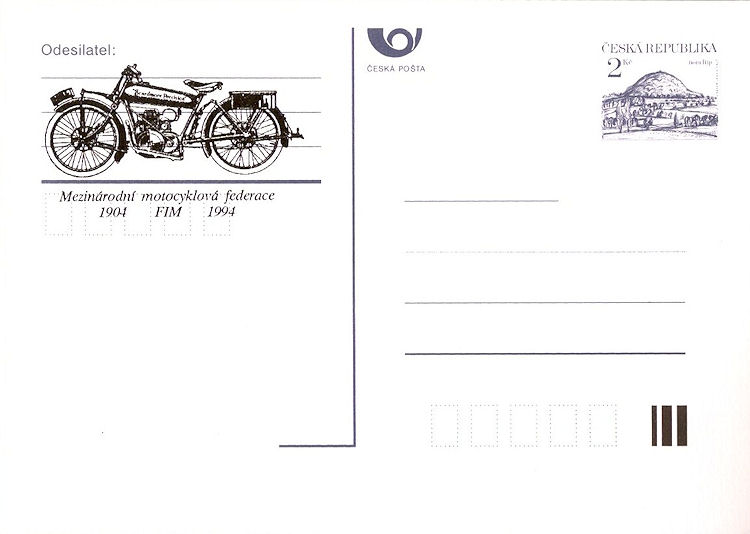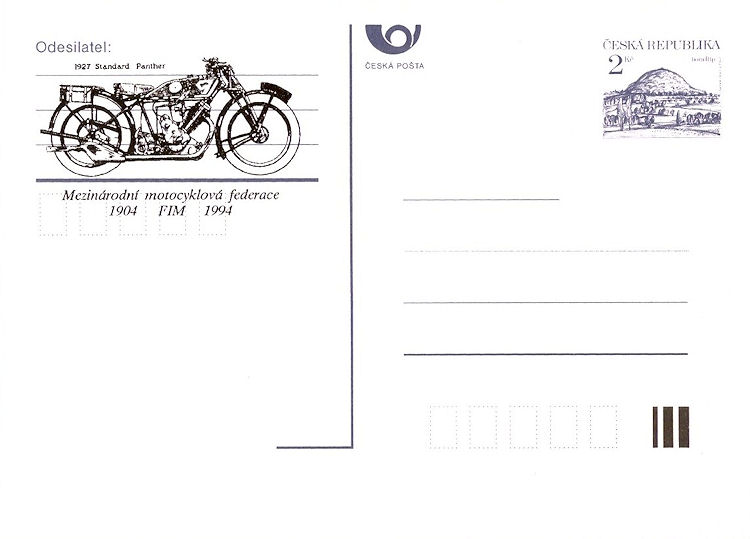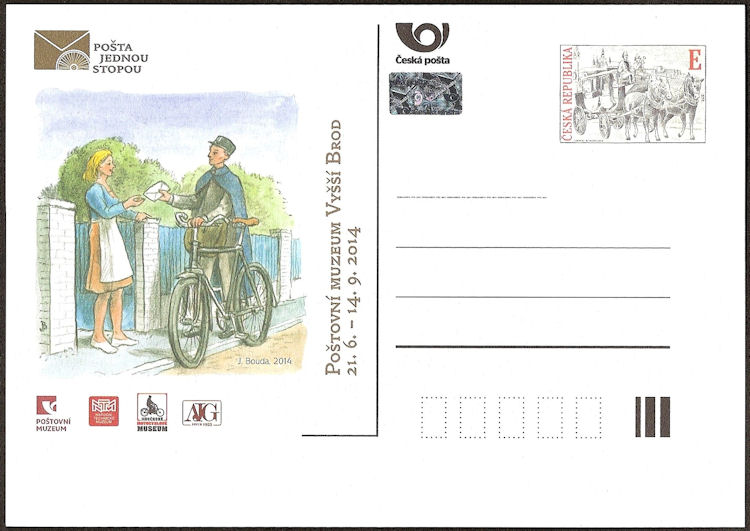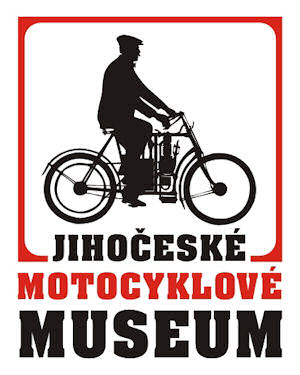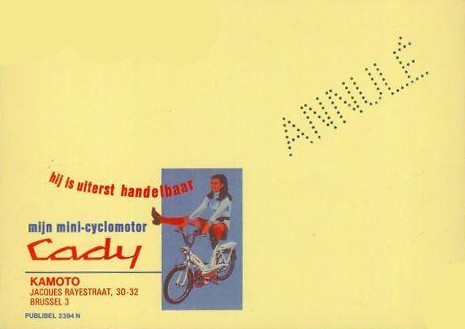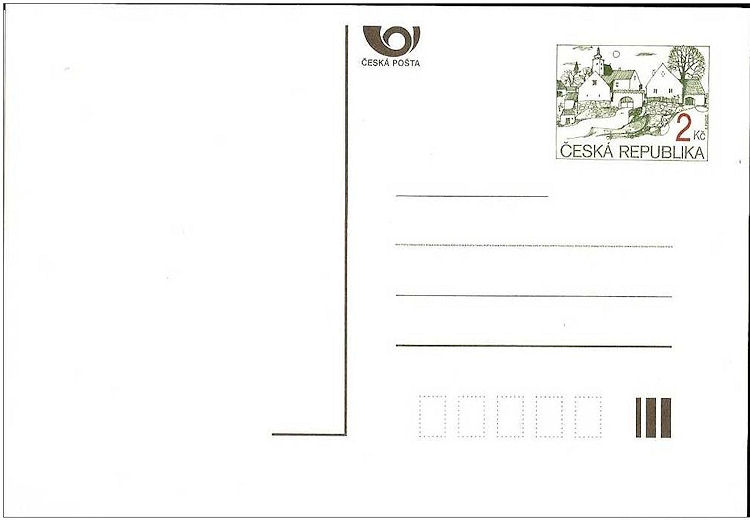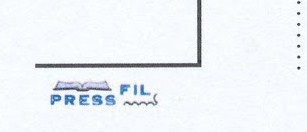Postal StationeryNext to stamps with motorcycles, many of us also collect so-called postal stationery with images from or a relation with motorcycles. A piece of postal stationary is an item (letter, postcard) to be sent that is already franked when bought, and where the stamp that must normally be sticked on is replaced by an imprinted stamp, text or image that represents the franking. The present postcards exist in 4 different categories. Operational postcards, that are used to send announcements, special event postcards issued by the post, postcards sold to be provided with extra printing and greeting cards with imprinted stamp. As example we will take the Czech Republic. |
|
|
The third kind of organisation that arranges offical issues are the post related philatelic musea. Here such a Czech museum postal item, issued in co-operation with a few other musea, amongst which the Motorcycle museum in Budejovicke. These issues carry the logo of the post museum.
|
|
Now we come to a bit dusky area: pre-franked greeting cards.
Many postal administrations (and especially in the East and Far East) sell the right to print stamps on greeting cards. Sometimes the post organisation itself delivers sheets with value (stamp) imprint, and the printer only adds the image. In this case a printing proof must be provided to the postal service before the actual issue.
Off course it must be counted how much greeting cards are printed, and how many are returned and (must be) destroyed after the period of use. Thus a lot of calculating, which is often considered too complicated. The only thing we can be sure of is that a delivered card is a paid and officially used card. But personally I like a fresh card more than a thumbed one.
The most difficult group is formed by postcards that are made and sold to imprint with an image later. These cards are delivered loose or in sheets to third parties that imprint the image themselves.
Often, like in the example from Belgium, the imprints are tested and these examples may or may not be provided with the perforation ANNULÉ or the imprint SPECIMEN.
In the Czech Republic these cards are delivered with an empty space on the left.
Associations, clubs and publishers promptly use this possibility to generate profit. In the Czech Republic there are, next to a lot of small "printers", a few big players in this market. Famous are Bimba.cz and Press-Fil, which is part of catalogue maker Phila-News. These postcards are private makes, although the images can be very nice. The mentioned Press-Fil issues many postcards per year but fairly prints its own logo on its products.
This kind of products makes it worth to well evaluate them before buying and use them in your collection. If you have the possibility, check on the offical sites of the postal services whether it concerns an official piece of postal stationery.
Hans de Kloet
